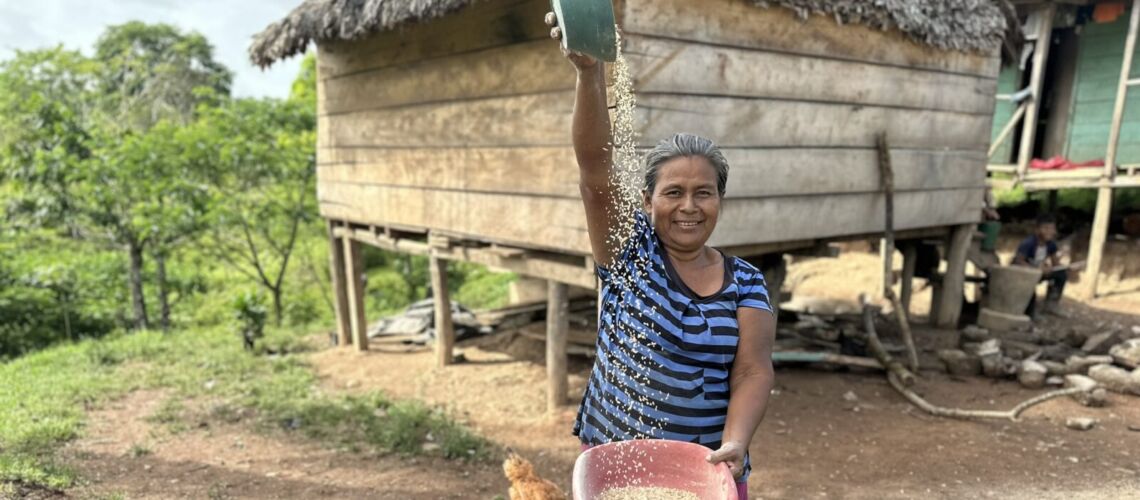From the Field
July 24, 2025
From the second boat in our small convoy, we follow the first (loaded to capacity with white pvc pipes) up the Bocay River toward Amak. We navigate small rapids and narrowing sections, keeping a close eye on the precious cargo. Upon arrival, unloading the materials is a true community effort as the pipes are first unloaded onto the riverbank, then carried up and over and across and through – winding between houses and pathways to reach the allocated storage building. Many hands (big and small and in between) make quick work of the task. It is but the first step toward a water system that will deliver drinking water to the 245 families here, but it feels like a big one.

Community leaders and members gather for the project kick-off. The meeting includes passionate and invested men and women, ranging from members of the territorial government—who offer impassioned greetings: “Welcome to our humble community. Thank you for the initiative that is going to make our dream realized.”—to those who are ready to contribute physical labour and support if called upon: “Thank you for this effort! We can offer tools or anything we have and commit to helping in any way we can.”
The circle of introductions confirms once again that the people of Amak are eager to be partners in this process – to restore water access to its residents. The to-do list includes tank rehabilitation, digging up and replacing old pipes that lead form the tank to the village and, most daunting of all, replacing the main water tube that, spanning the Bocay River high up in the air, will carry fresh water from its source (on the opposite side of the river from Amak) into the water system.

In the community, we meet Demetria. Her home sits across from the pipe storage, and as she goes about separating rice from the husks, she shares her happiness at seeing evidence that the water system project is moving forward. She lifts a scoopful of grains into the air and tips it toward the waiting bucket below. It’s a slow pour. Demetria is expertly positioned so that the light breeze blows the husks out of the falling rice and onto the dirt at her feet where the chickens have gathered in anticipation.
It has been some years — she’s not sure just how many — since she has had access to clean water close to home. Since the water system that used to pipe water to various community water points failed, her family has been collecting water from the source across the river – a walk and a paddle away. The rehabilitation project will add water taps to each of the 139 homes in Amak, which will be both a novelty and a first for Demetria and her family.

Our team, now planted in Amak—two community coordinators and two water system engineers—are now two months into working with community members on rehabilitating, repairing, and reinstating the water system.
Soon, water will flow to families here!
Bosawas Central America and the Caribbean Health In The Field Indigenous Peoples Nicaragua Water

